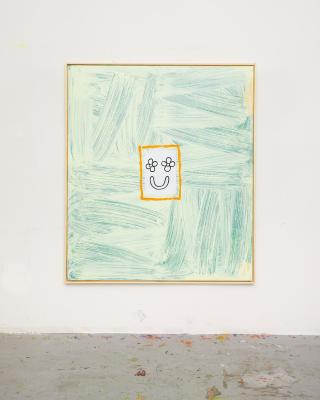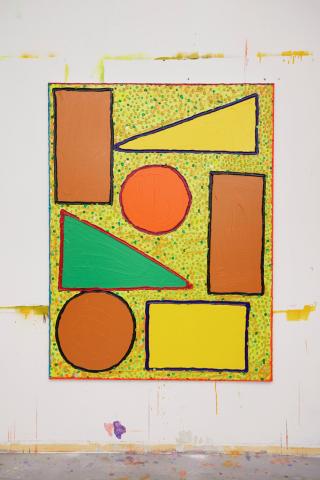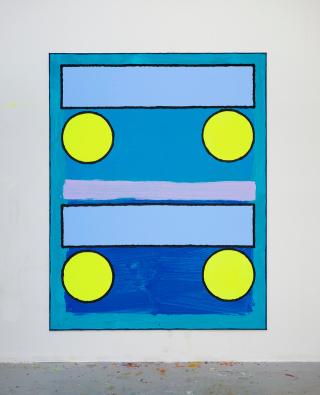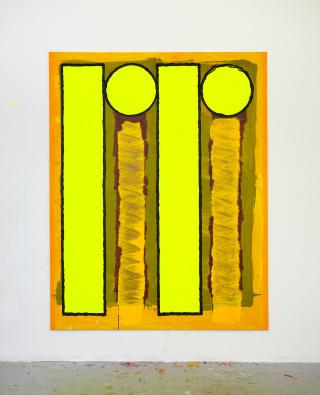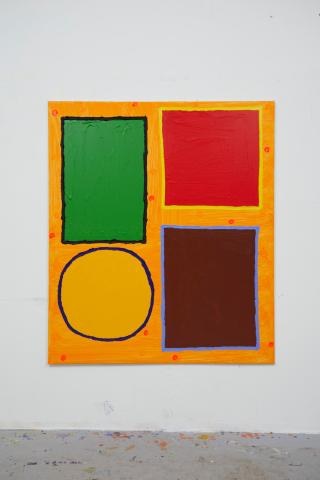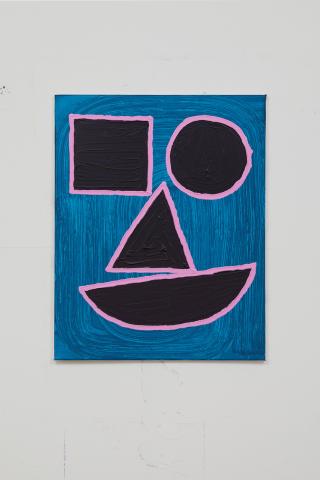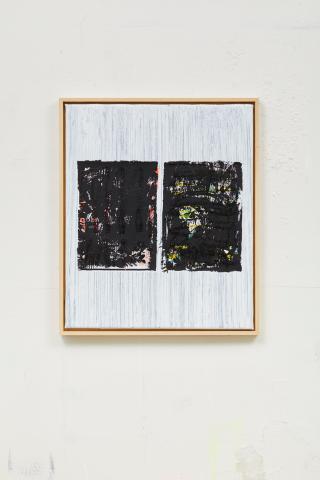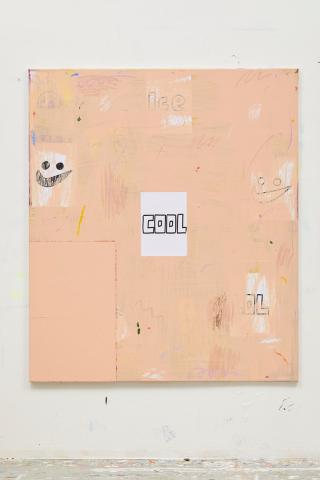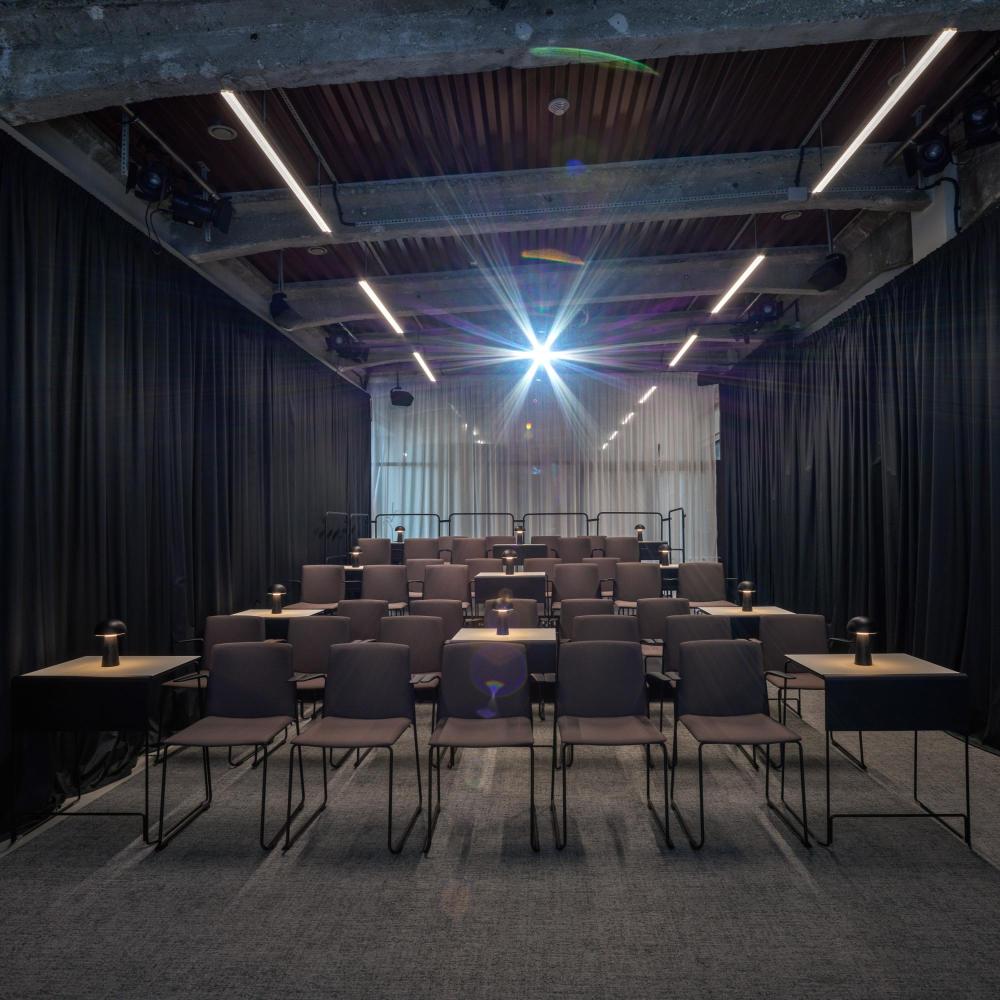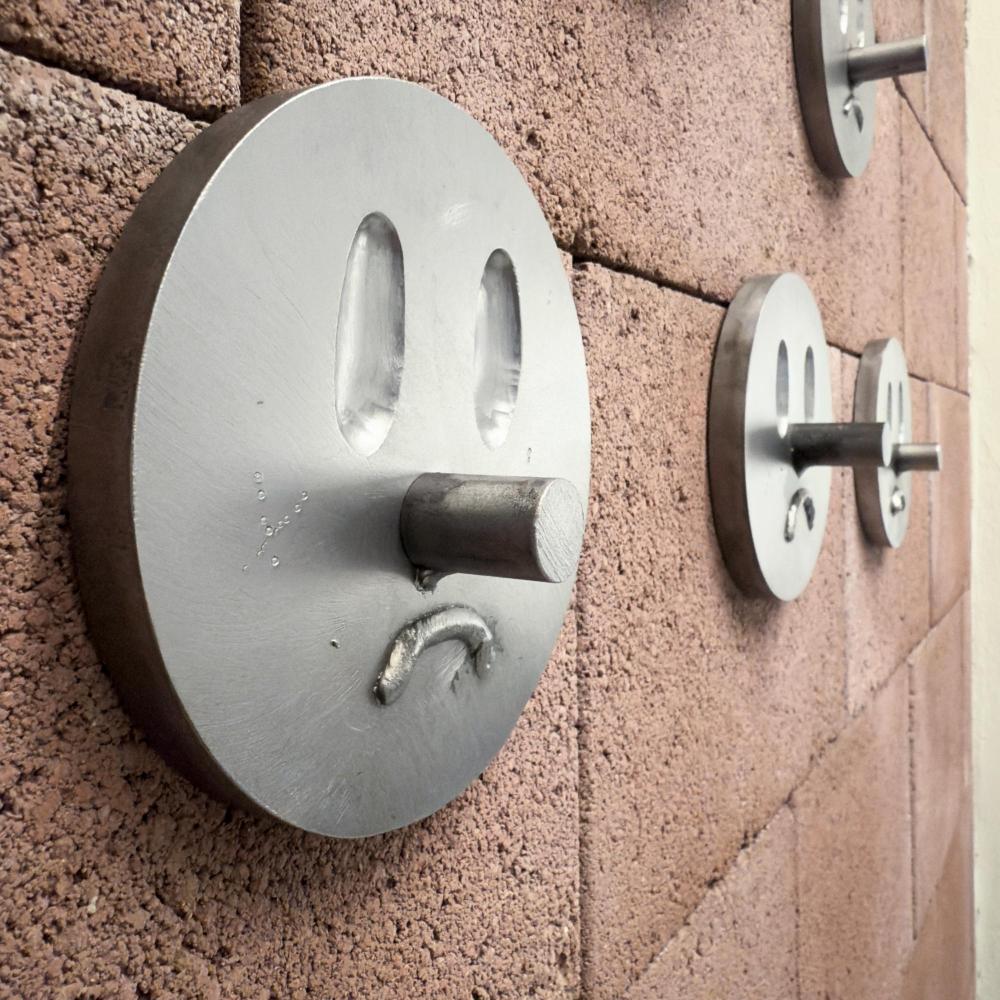David Krňanský (*1987) studied in the studio of Jiří Kovanda at the Jan Evangelista Purkyně University in Ústí nad Labem and then in the studio of Jiří Černický and Marek Meduna at the Academy of Arts and Crafts in Prague. During his studies, he founded the art group Black Hole Generation with his classmates Julius Reichl, Martin Lukáč and Štěpán Marek, which critically commented on the imperfections of the contemporary art environment. Since his graduation, Krňanský has focused mainly on painting and has long explored the theme of crisis. Krňanský has exhibited in the Czech Republic and abroad, for example at Jelení Gallery, SPZ, Futura, Hunt Kastner, Berlin Model, Pilsen City Gallery, Brno House of Arts. Krňanský's work has been presented repeatedly at art fairs abroad and is represented in private collections in the Czech Republic.
You've spent the last few weeks in residence here at the Telegraph. Did you know in advance what you'd be working on here? Were you starting a new project? And how did you find the new studio environment?"
It was great to work here. Any residency is good in that you can focus on your own stuff. I don't have to switch between studio and home and meet people in between. I don't do projects. I paint pictures and I think that's a completely different discipline than working on projects for institutions or working conceptually. I enjoy that way of thinking, but I just paint with paint on canvas. I can't imagine inventing a project for this discipline. I tried it when I was in school and you had to have the work supported by some kind of thought construct, but I don't think it works that way.
I didn't do anything for a long time because the conditions weren't right for it, so I threw myself into the work completely spontaneously. I struggled a little bit in the beginning and it was just experiments. I think that's so generally true of people who paint pictures. It's about continuity, where you create a language. Sometimes it's more conscious and sometimes it's less conscious, but it requires "daily work". I took advantage of the residency for two months, but since it was Christmas and New Year's, I guess it wasn't the best timing. At the same time, the break between the holidays gave me space to reflect and helped bring in new energy. When I returned to the studio after the holidays, I repainted four paintings that I wasn't happy with.
To what extent do you let your intuition guide you in your work?
Intuition seems to me to be the most important key. I approach art in a way that makes me interested in the subject matter or not. It has the ability to engage, to win people over. And I feel like it works the same way in reverse when you're making art. It's kind of my strategy. I follow my inner compass. I appreciate things that are built around a story or try to address different themes, but I'm trying to address something of mine. To resolve that on a white canvas in some format with the use of color feels like a challenge to me.
When you exhibit, do you match the paintings to the space or the space to the paintings?
This has changed a lot for me. While I was studying, I saw the exhibition as a whole. I found it good to do some stage design for the art, but the more I paint, the more I feel that the painting carries a message on its own. I like when the space and the painting complement each other. I don't have any ideas in my head at the moment. When I want to deal with architecture, I'm dependent on other people, and that's a complication that puts me off. I will paint the painting myself. It is better for me to focus and grasp my energy and translate it into a painting. Then there is no point for me to finish it through space. For the type of paintings I do, it doesn't make sense to customize the space. A white cube type gallery is best suited to my paintings.
You're always trying new things. Together with Repete and Breadfit store you created a unique bike. Unique in the sense that it's a single piece that combines Repete's craft, Breadfit store's philosophy and your graphic design, which is based on the Crisis Mag (LOL LIFE SOCIETY) publication. How did you approach the project?
I love design and this was a collaboration of joy. This wasn't even a commission, it was a friendship collaboration. I ride a bike myself. Repete make great bikes, Lukas who has Breadfit with his wife makes great bread. They like art and it's all about a shared philosophy, things we're interested in and want to surround ourselves with. It was pure enthusiasm for the cause. We thought about doing five of them. People responded great to it and it probably would have sold, but it stayed as a bike for Luke. We all agreed on that. It wasn't about creating a product that would sell. It was about creating a specific thing for a specific person, and Lukas came up with the whole thing himself. He came in saying he liked these drawings, I gave him the magazine and we agreed that I would draw something else for him and he could do his own thing with it. We just consulted together. It was a smooth process.
You're one of the artists working with the Ferdinand brand, where you designed your socks. How do you see the line between art and design?
The Czech Republic is small and people know each other and want to create these things together. I'm the one that people come to and I try to accommodate every time because by doing so I'm supporting a local company, a local product that I like, but I'm also skeptical about it to a certain extent because the line between art and design is really thin. I feel that I can lend something of my art, strip it of the aura of a work of art and leave it as a motif that is replicated. It doesn't harm the thing itself because it's not like a photo of a painting that's printed. It's more like my handwriting and I'm not resisting using it in design. I recently made a table at home. Since things I like are either unavailable or non-existent, I decided to make one myself. Based on that, I have a desire to try design. I like the connection. I feel like the categories are becoming more clearly defined, and the definitions themselves are preventing intermingling.
Your work has been predominantly painting lately. Do you also return to sculptures and objects in your work?
I feel that things are constantly connecting and one moves from one thing to the next. It's like a lineage that is sometimes more fluid, sometimes less so, but eventually I draw back from myself and my own experiences and bring it into the new work. The split images inspire me to create objects. But as I mentioned with the first question, help is needed. Working with certain materials requires skills and equipment. After the experience of making the table, I found that I can do certain things myself. I plan to make objects out of wood. I enjoy the classic material and feel it works best to represent what I want. Tendentious forms don't interest me.
During your studies in Prague, you and your classmates formed the art group Black Hole Generation (B.H.G.). Can you give us a little background on it?
I think school is the best incubator for ideas and sharing them. And because we were a group of people working on the same problem, it was automatically offered to try to work it out together. First, we created an exhibition where we wanted to move away from painting as a group of people and create an environment through objects, installations and video. A comprehensive report on the state of our mind. There was a lot of discussion at the time about the internet environment and the endless material it contains. The exhibition was called Black Hole Generation and based on that we started to be seen as a group. It has its advantages. It helped us to get more visibility and to exhibit abroad. At the same time, it requires responsibility in dealing with the project agenda, and that's where it failed somehow. Because the founding members are painters, it took us away from working on our own things. Maybe in the future we will do something.
You also spent some time in Athens. How would you compare the Czech and Greek art scene? What did you like there?
In Greece, I especially like the fact that the sun shines there. I still live there partly. I'm going to spend the whole of February there now. But I'm trying to limit that because I have more peace of mind to work, offers to exhibit and my collectors, without whom I couldn't make art. The art scene there is in some ways similar to ours, and at the same time it has its own specifics like any other scene. The big difference I see is that Athens, as an international metropolis, has a great cultural diversity, which brings a lot of advantages. There's a normal cost of living, so that's great for artists. The clash of different identities and cultures generates a new energy that is constantly updated. Czechs, even if they adopt models from the West, are still local. There is one single culture. We do better institutional exhibitions, but the art is still the same. It's great, I have nothing against it, I just miss the international overlap in art. In Athens, the progressive commercial galleries are not afraid to invest and show artists from all over the world and then they still know how to sell it. In the Czech Republic, not many people can do that and we are not used to it. There is a more varied scene there, but here, in a way, the environment is more stable. But the quality is the same everywhere. There's not enough of it in the abundance.
By Jana Růžková
